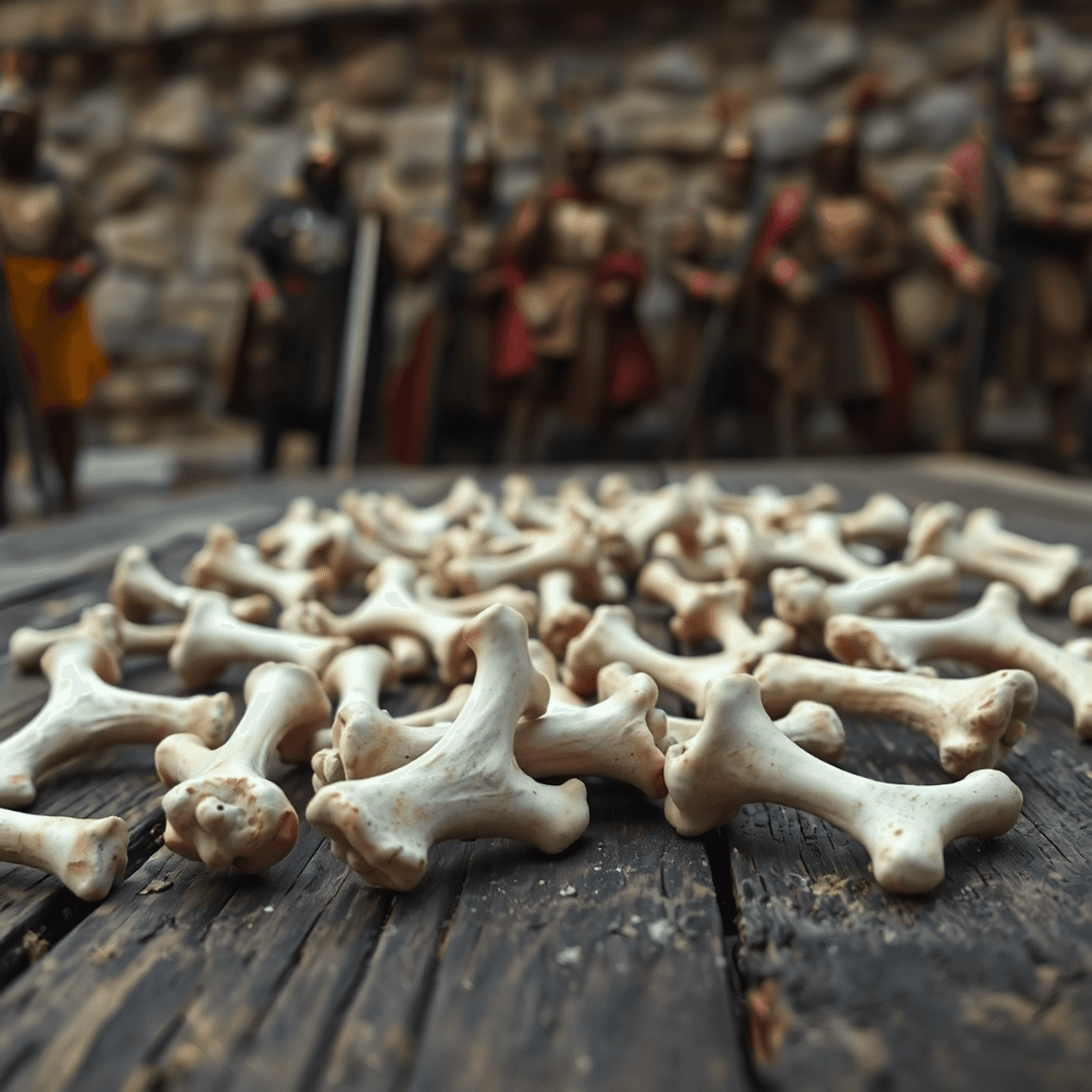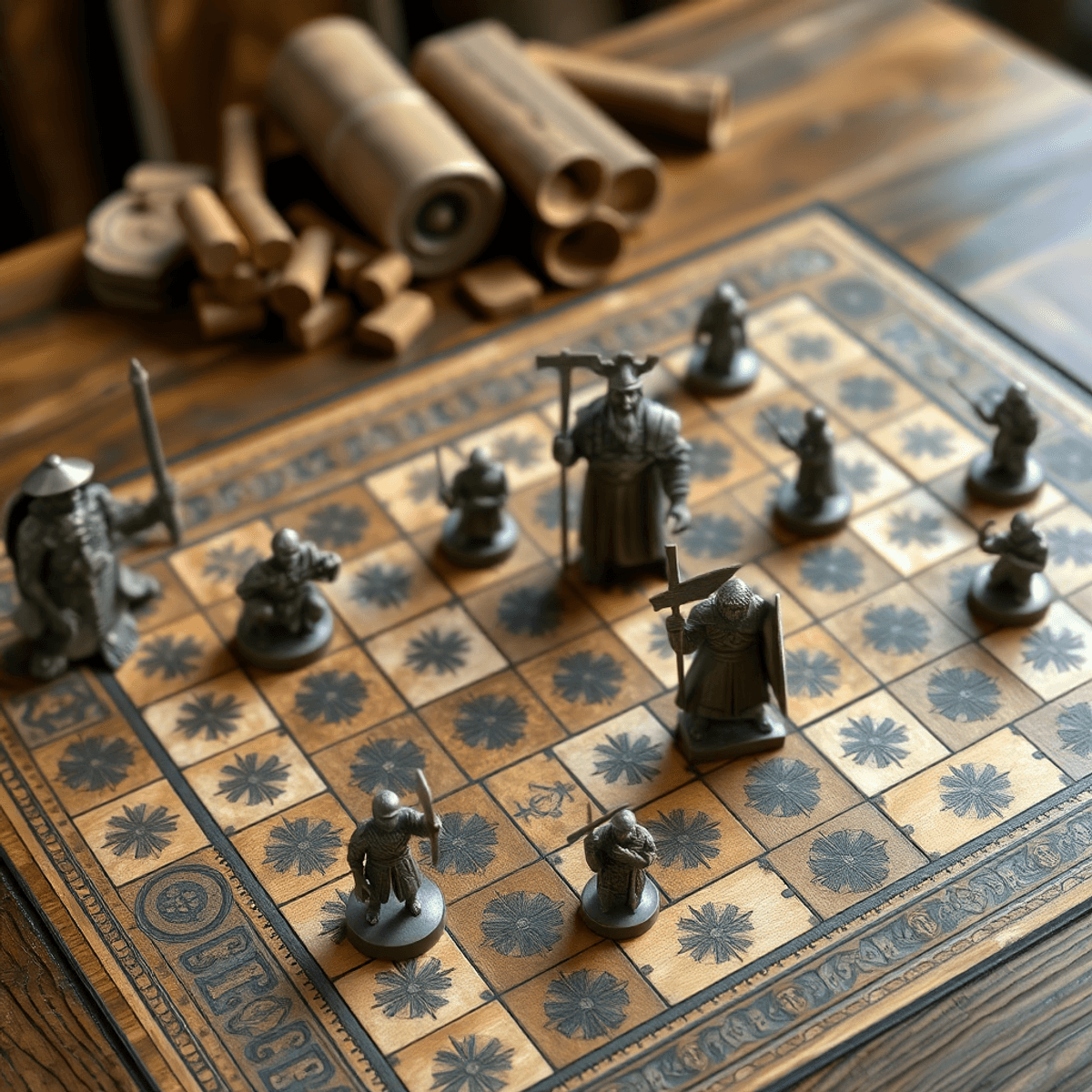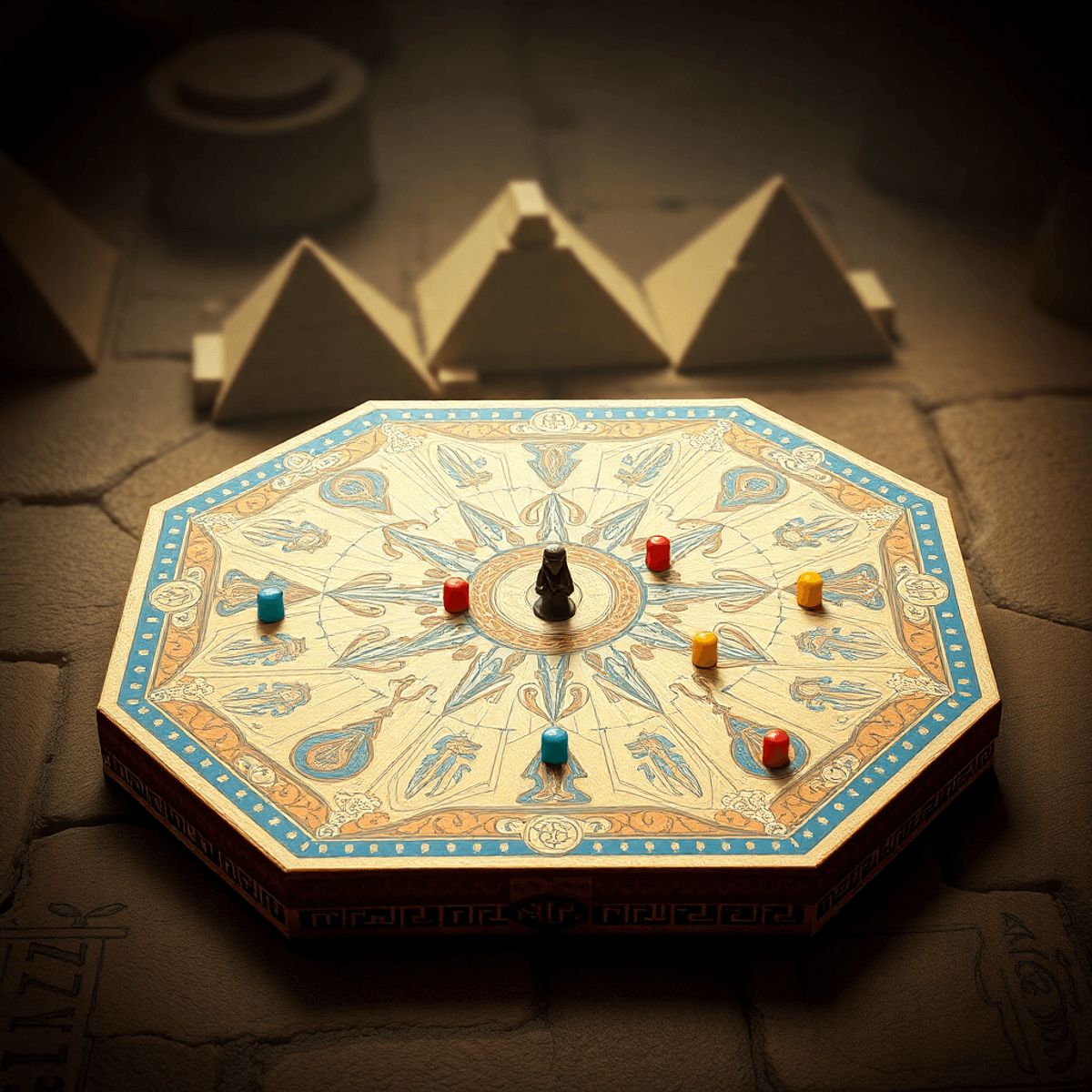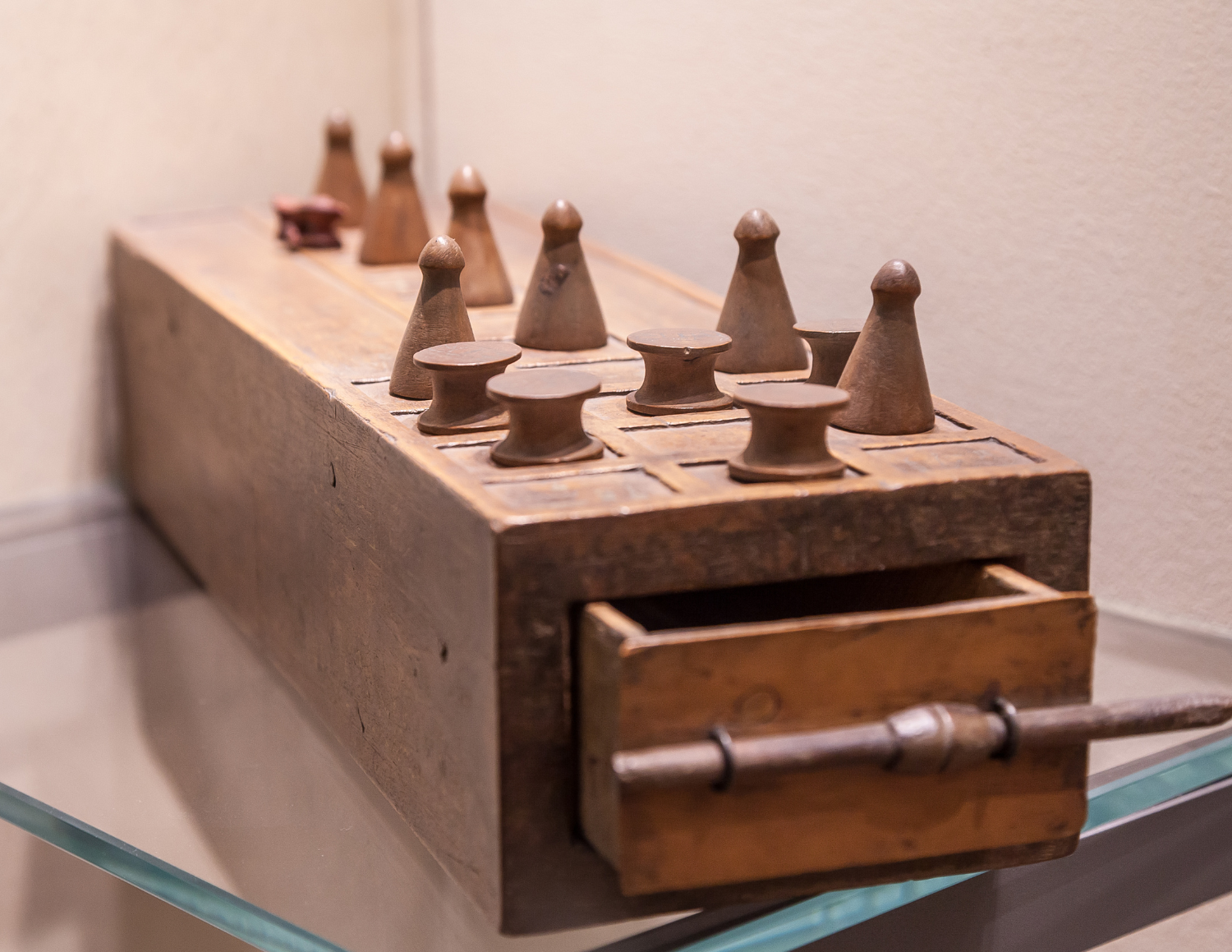
Imagine a group of Roman soldiers gathered around a small patch of ground, their eyes locked on tiny bones flying through the air. This isn’t a mystical ritual—it’s knucklebones, a game rooted deep in Knucklebones game history, blending chance and skill in a form of ancient entertainment that has fascinated cultures for centuries.
A Game of Bones
In Ancient Rome, knucklebones—known as tali—was more than a pastime; it was a reflection of the era’s passion for play. Central to Knucklebones game history, these humble sheep ankle bones became the foundation for modern classics like dice games and jacks, showing how simple materials can evolve into beloved sources of amusement.
What makes knucklebones truly captivating is its dual nature. Each throw combines pure luck with precise hand-eye coordination, creating a game that tested both fortune and finesse. Roman citizens from all walks of life – soldiers, children, nobles, and commoners – were all drawn to its addictive mix of chance and skill.
But what magical quality could make a handful of animal bones so irresistible that they’d win over hearts across centuries and continents? The answer lies in the game’s perfect simplicity: five small bones, countless possibilities, and the timeless human desire to challenge both luck and ability in the quest for victory.
Knucklebones’ Influence on Modern Gaming
However, knucklebones’ impact goes beyond ancient Rome. Its legacy can be seen in various aspects of modern gaming:
- The evolution of action selection in board games showcases how elements of luck and strategy have been integrated into contemporary game design.
- Exploring tile placement and modular game design reveals another layer of complexity that has emerged from simple games like knucklebones.
- The success of certain board games can often be traced back to the innovative work of famous board game designers, whose creations have left a lasting impact on the gaming industry.
Let’s delve deeper into this ancient pastime and uncover how it has influenced gaming history, starting with its incredible journey through the Roman Empire.
Origins and Historical Context of Knucklebones
Knucklebones have a rich history that traces back to Ancient Greece, where players would gather to showcase their skills using astragaloi – sheep ankle bones that functioned as natural dice. These gaming pieces eventually evolved into the Roman tali, signifying the game’s progression across Mediterranean civilizations.
Possible Asian Origins and Spread
Knucklebones game history stretches back even further than Rome. Archaeological evidence suggests the game may have originated in Asia, slowly making its way west along ancient trade routes. Merchant caravans and diplomatic envoys carried these captivating bone pieces from Central Asia’s steppes to the bustling ports of the Mediterranean.
The Trojan War Connection
Greek mythology intertwines knucklebones with the legendary tale of the Trojan War, specifically through the character of Palamedes. According to the myth, Palamedes introduced the game to Greek soldiers during the protracted siege of Troy, offering both amusement and a means to hone their reflexes during periods of military inactivity.
Roman Influence and Cultural Exchange
The game’s popularity surged significantly due to Roman military campaigns. As legions marched across Europe, North Africa, and the Middle East, soldiers carried knucklebones in their backpacks, introducing the game to local communities. Roman military encampments became cultural melting pots where soldiers taught tali to indigenous peoples, resulting in new variations that incorporated regional customs and preferences.
Independent Development Elsewhere
In areas unaffected by Roman expansion, similar games emerged independently, utilizing locally available materials such as pebbles or intricately carved wooden pieces. These parallel developments underscore humanity’s innate desire to create entertaining activities that challenge both chance and skill. This inherent motivation is also evident in the evolution of social board games, which not only provide amusement but also mirror societal and cultural trends throughout history.

The Game Mechanics of Knucklebones in Ancient Rome
Ancient Romans played knucklebones using tali – sheep ankle bones meticulously cleaned and polished to create natural dice. Archaeological findings from Pompeii reveal these pastern bones featured four distinct landing sides, each assigned different numerical values:
- Venus (3-3-4-4): The most favorable roll
- Vulture (1-1-3-3): A mid-value combination
- Dog (1-1-4-4): Lower scoring position
- King (1-3-4-6): Variable scoring potential
The basic gameplay required players to scatter five bones across a flat surface. Players demonstrated their skill through a progressive series of challenges:
- The Ones: Pick up single bones while tossing a designated “jack” bone
- The Twos: Gather bones in pairs between tosses
- The Threes: Collect three bones at once, then the remaining piece
- The Fours: Attempt to scoop all bones in a single swift motion
Pompeii’s preserved frescoes showcase the game’s cultural significance, depicting goddesses engaged in matches of tali. These artworks reveal players crouched in concentration, timing their moves between tosses of the jack bone. The combination of precise hand movements and unpredictable bone landings created a captivating blend of skill and chance that appealed to Romans of all social classes.
Archaeological evidence suggests players often personalized their knucklebones, with some specimens showing intricate carved patterns or precious metal inlays – transforming simple sheep bones into prized gaming pieces. This personalization extended beyond mere aesthetics; it also reflected the player’s identity and status within the societal hierarchy.
Interestingly, some of these personalized knucklebones were found with artistic engravings that further enhanced their value and appeal, making them not just gaming tools but also unique collectibles.
Knucklebones Compared to Other Ancient Roman Dice Games
Ancient Rome was alive with various dice games, each with its own mix of luck and strategy. Alea, played with cubic dice marked with pips, was a straightforward game of luck. Players would roll their dice from leather cups onto specially marked tables, betting on specific number combinations or high totals.
The Romans also enjoyed:
- Duodecim Scripta – A backgammon-like board game using three six-sided dice
- Tesserae – A simple dice game using six-sided cubic dice
- Venus – A gambling game where the highest throw won
While the evolution of dice has been significant, knucklebones distinguished itself through its unique combination of physical prowess and fortune. While alea players merely tossed dice, knucklebones demanded precise hand movements, strategic thinking, and split-second timing. This blend of skill and chance created a more engaging experience that appealed to both casual players and serious gamblers.
Roman society viewed these games differently. Pure dice games like alea faced periodic legal restrictions due to their association with gambling and social disorder. Knucklebones, with its skill component, enjoyed broader acceptance as both a children’s pastime and a sophisticated adult entertainment. Archaeological evidence shows knucklebones sets in contexts ranging from military barracks to wealthy villas, highlighting its cross-class appeal.
The physical demands of knucklebones also made it popular among Roman soldiers, who valued games that helped maintain dexterity and coordination during long periods of garrison duty. However, it’s interesting to note how these ancient games have influenced modern gaming culture, including the rise of Eurogames, which are characterized by strategic gameplay often modeled after traditional board games from various cultures around the world.
Global Variations and Evolution Through Time
The journey of knucklebones is truly remarkable, spanning across continents and centuries. Throughout this time, different regions around the world have developed their own unique variations of the game.
Regional Variations
Here are some notable regional adaptations of knucklebones:
- In Mali, Africa, children play Wari using small stones arranged in intricate patterns.
- In Korea, players enjoy Gonggi, which involves playing with polished pebbles.
- Japan has its own version called Otedama, where fabric pouches filled with beans are used.
- Polynesian cultures have adapted the game by incorporating coconut shells and coral pieces.
- Native American tribes have created their own versions using deer knuckles and painted stones.
- European variations like the Russian Babki have maintained closer ties to the original Roman rules.
Evolution of Playing Materials
The materials used to play knucklebones have also evolved over time, reflecting advancements in human technology. Here’s a breakdown of the different eras and their corresponding playing materials:
- Ancient Era: Sheep anklebones, carved ivory pieces
- Medieval Period: Polished stones, wooden blocks
- Industrial Age: Metal jacks, glass marbles
- Modern Era: Plastic pieces, rubber balls
Contemporary Versions
In recent years, new elements have been introduced into the game:
- Digital adaptations for mobile devices
- Educational variants teaching math skills
- Professional tournaments with standardized equipment
The most widely recognized descendant of knucklebones today is the modern game “Jacks.” This version combines the ancient principles of knucklebones with a bouncing rubber ball. It places emphasis on hand-eye coordination while still preserving the core elements of skill and chance that have fascinated players for thousands of years.
Interestingly, this evolution isn’t limited to just knucklebones. The evolution of deck-building and card-driven games also showcases how traditional games adapt over time, reflecting changes in culture, technology, and player preferences.
The Role of Luck Versus Skill in Knucklebones Through History
Knucklebones stands apart from other ancient games through its unique blend of chance and skill. The game’s dual nature created an intricate balance between pure luck and practiced dexterity, making it a fascinating study in game design.
The Skills Required in Knucklebones
The skill component demands:
- Precise hand-eye coordination
- Strategic planning of moves
- Quick reflexes for catching
- Spatial awareness for bone placement
The Role of Luck in Knucklebones
The luck element emerges from:
- Unpredictable bone landing positions
- Random bounce patterns
- Natural variations in bone shapes
- Environmental factors affecting throws
Research from the Journal of Gambling Studies reveals that games combining skill and chance create stronger player engagement than pure luck-based activities. This psychological insight helps explain knucklebones’ enduring appeal across Roman society’s social spectrum.
Children embraced the game as a way to develop motor skills, while soldiers used it to maintain dexterity and combat readiness. The nobility appreciated knucklebones as a sophisticated pastime that showcased both natural talent and practiced expertise.
The game’s accessibility played a crucial role in its widespread adoption. Players could influence their success through practice, yet the element of chance meant that anyone – regardless of experience – had a chance to win. This democratic aspect of knucklebones created a level playing field where servants could compete with senators, and novices could challenge masters.
Cultural Significance and Legacy of Knucklebones in Ancient Rome
Ancient Roman art reveals tali as more than just a game – it represented the delicate dance between fate and human agency. Frescoes discovered in Pompeii show the goddess Venus playing knucklebones, symbolizing divine influence over mortal fortune. Roman poets often used knucklebones as metaphors for life’s unpredictability in their works.
The game served as a vital social binding agent across Roman society:
- Military Camps: Soldiers used tali to maintain morale during long campaigns, with archaeological finds showing knucklebones in barracks and military outposts.
- Religious Rituals: Priests cast knucklebones to divine the gods’ will, treating the throws as sacred omens.
- Children’s Education: Young Romans learned mathematics through keeping score, developing strategic thinking through gameplay.
The cultural impact of knucklebones resonates in modern gaming. Popular video games like “God of War” feature mini-games inspired by ancient tali. Archaeological museums worldwide showcase Roman knucklebones collections, sparking renewed interest in historical gaming practices. This interest is part of a broader exploration into ancient and medieval board games, which have shaped history and continue to influence contemporary gaming.
Contemporary board game designers draw inspiration from tali’s blend of skill and chance, creating new titles that honor this ancient pastime. This trend mirrors the evolution of board games during the Victorian era, which significantly impacted social leisure and modern gaming trends. Educational programs use reconstructed knucklebones sets to teach students about Roman daily life, bringing history alive through hands-on play.
Moreover, exploring historical board games can provide deeper insights into the pastimes that shaped our current gaming landscape.
Conclusion
The enduring appeal of knucklebones is a testament to the power of play. At the heart of Knucklebones game history lies a universal desire for connection, competition, and entertainment—one that still resonates with modern players just as it did with ancient civilizations.
The legacy of this ancient pastime is alive and well. Knucklebones game history lives on through global variations, from traditional jacks to modern digital adaptations. Its perfect blend of skill and luck continues to captivate players across generations, echoing the experiences of Roman soldiers and countless others from ages past.
Interested in exploring more ancient games? Here are trusted resources to begin your journey:
- The British Museum’s Ancient Games Collection, featuring original knucklebones artifacts
- The Digital Ludeme Project, documenting historical game rules and variations
- A comprehensive study of classical games in Ancient Board Games in Perspective by Irving Finkel
If you’re intrigued by the history and cultural significance of board games, you might want to delve into the fascinating history of obscure and forgotten board games, or explore how conflict and strategy shaped gaming history. You could also uncover the timeless journey of classic board games or learn about the golden age of board games between the 1950s and 1970s. Lastly, for those interested in how certain games evolve over time, an exploration into the history and future of legacy campaign-based board games would be enlightening.
The next time you pick up a set of jacks or roll dice with friends, remember: you’re participating in a gaming tradition that has brought joy and excitement to countless generations across human history.




